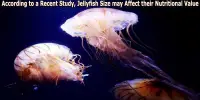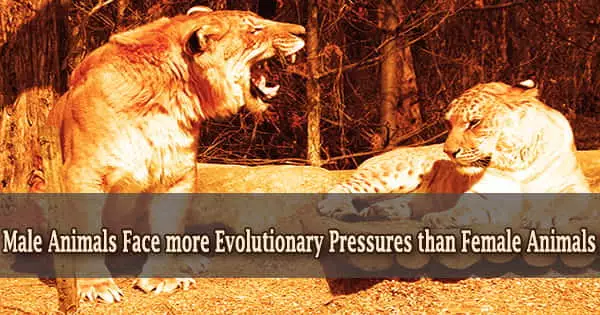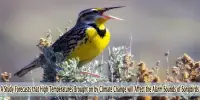Each winter, tens of thousands of critically endangered Nassau grouper congregate to spawn under the light of the full moon off the western coast of the Caribbean island of Little Cayman. The coral reef is overrun with fish, and when the ritual starts, solitary females jump out of the crowd straight up to the surface while numerous males chase after them. The ladies release their eggs during these vertical spurts, the men compete to fertilize them, and milky plumes drift in the moonlit water.
These priceless fertilized eggs are the catalyst for the critically endangered species’ still-limited comeback. This species is a crucial reef predator and was formerly the target of a significant Caribbean fishery. But where do these eggs end up after they’re cast adrift?
Scientists at the University of California San Diego’s Scripps Institution of Oceanography, Oregon State University (OSU), and the conservation organization Reef Environmental Education Foundation (REEF) teamed up with the Cayman Islands Department of the Environment to address this question by physically tracking clouds of tiny, transparent Nassau grouper eggs through the night with an underwater microscope developed by Scripps Oceanography Marine Physical Laboratory scientist Jules Jaffe.
In a recent study, the researchers demonstrate that fertilized eggs from the Little Cayman spawning location floated back onto reefs elsewhere on the island in 2017. The work was published on May 10 in the Proceedings of the Royal Society B: Biological Sciences.
The scientists also used a computer model to look at where the fertilized eggs most likely went in 2011 and 2016. They drew on these direct observations and ocean current data gathered on spawning nights in Little Cayman.
The model suggested that many of the young Nassau grouper returned to Little Cayman in 2011, which is consistent with other studies that showed the 2011 reproductive season resulted in a substantial population increase in the area of Little Cayman. The model to have received some fertilized eggs in 2016 anticipated the Nassau grouper population on Grand Cayman, which has not rebounded as well as the population on Little Cayman.
The study shows how reproductive success and the final resting place of the grouper eggs can change from year to year. It also indicates how local conservation efforts to safeguard Nassau grouper are enhancing local populations and occasionally having spillover advantages to nearby islands.
“This study helps us understand one of the key physical processes behind any population growth or conservation success we end up seeing for this important, endangered reef fish,” said Brian Stock, the study’s first author who conducted the research as part of his Ph.D. at Scripps and who is now a scientist with Norway’s Institute of Marine Research. “Getting this done was a huge technical challenge that really benefited from bringing together the wide ranging expertise of Scripps scientists.”
Millions of Nassau groupers used to inhabit the Caribbean, but their eye-catching full moon aggregations made them simple prey for fishermen. Most populations had experienced a sharp drop by the 1980s, and many spawning aggregations no longer occurred.
This study helps us understand one of the key physical processes behind any population growth or conservation success we end up seeing for this important, endangered reef fish. Getting this done was a huge technical challenge that really benefited from bringing together the wide ranging expertise of Scripps scientists.
Brian Stock
The Cayman Islands government enacted temporary protections that halted fishing in 2003, and established permanent protections in 2016 that included no fishing during the spawning season (December to April) as well as year round size and number limits.
On Little Cayman, protection allowed the Nassau grouper population to recover from around 2,000 fish to roughly 7,000 by 2018. In that same time period, the population around nearby Cayman Brac grew from about 500 to 2,000. Grand Cayman’s population has yet to show signs of recovery, but conservation measures provide an essential foundation for a big reproductive year to restart the population.
One of the key research findings from the Grouper Moon Project, a conservation science partnership between REEF, the Cayman Islands Department of the Environment, and researchers from Scripps and OSU started in 2002, is that Nassau grouper don’t island hop as adults. The only ways populations can recover are through in-area reproduction or through exceptional years when the currents carry larvae from larger populations on nearby islands.
Stock said this is one of the key reasons he and his colleagues wanted to track the fertilized eggs from Little Cayman, which hosts the largest known aggregation of Nassau grouper in the world. They were interested in finding out whether Little Cayman grouper were self-renewing and whether this thriving population may serve as a catalyst for recovery on other islands.
The crew performed an intricately orchestrated marathon of field work in order to find out.
On February 14, 2017, the grouper gathered at sunset while a contingent of research divers waited for the show to start. The divers alerted team members on a nearby boat to deploy a drifter a big canvas sock that is pushed along with the current at a depth of about 50 feet and is attached to a flashing spherical buoy on the surface once the fish began to reproduce. Over the course of the spawn, the divers released five drifters into the center of the egg plume.
The boat pulled a specially adapted underwater microscope back and forth across the drifters’ route for fifteen hours straight while they drifted away from the aggregating fish.
Jaffe’s team originally designed the device to document local marine life by taking photographs of tiny, mostly transparent plankton while affixed to Scripps Pier. Because of this, Stock and his co-authors knew exactly how to modify it so they could watch how the similarly tiny, translucent grouper eggs distributed after fertilization.
The scientists could determine whether the eggs were drifting with the current or if they were spreading out into the wider ocean by dragging the microscope in a zigzag manner across the area delineated by the flashing drifters.
Nassau grouper typically spawn for multiple nights in a row, so the team went back and repeated the same process the very next night, this time shadowing the floating patch of eggs for 36 hours.
Over the two spawning nights in 2017, the researchers captured 238,184 images, and subsequently identified 2,265 as Nassau grouper eggs. Importantly, each of these photos were paired with 3D location data so they could be plotted in space and time.
After analyzing this mountain of data, the team found that on the first night of spawning the eggs went north, with one drifter ending up near the southern coast of Cuba 18 days later. But on the second night in 2017, the eggs and larvae spawned at the Little Cayman aggregation were mostly delivered back to Little Cayman reefs.
Stock and his colleagues also had drifter data from the 2011 and 2016 Nassau grouper spawns on Little Cayman, and by combining them with their direct observations in 2017 they were able to create a model to predict where the fertilized eggs likely ended up in 2011 and 2016.
The 2011 Little Cayman spawn, a crucial reproductive year that later spurred population recovery throughout the island, was expected by the models to primarily send eggs back to Little Cayman reefs. For the 2016 spawn, the model suggested that fertilized eggs ended up at Grand Cayman, a neighboring island with a depleted Nassau grouper population.
Stock said the study’s results confirm that the cloud of eggs generally stays close enough together to make drifters a reliable and relatively low-tech way to evaluate where larvae are likely to end up in the first 24 hours after spawning.
The findings also show that the thriving Little Cayman population of Nassau groupers appears to be self-replenishing as well as occasionally donating larvae to nearby islands.
“At least on Little Cayman, local protections benefit local fish populations, which can be a really useful incentive to motivate conservation,” said Stock. “It also highlights the importance of protecting fish spawning aggregations for other species that reproduce that way. There are lots of fish species that form aggregations like Nassau grouper, so these lessons could be useful for conserving other species.”
Finding a method to track the fertilized eggs physically also paves the path for one day knowing what causes reproductive booms like the one the Little Cayman Nassau grouper experienced in 2011.
“People have been trying to do that for 100 years, but this moves us closer to being able to one day, in a particular place tease apart the drivers whether it’s transport, predation, or starvation behind these years where large numbers of larvae survive,” said Stock. “That’s fundamental to whether a population increases, and the better we can understand it the more effectively we can do conservation and manage fisheries.”
















